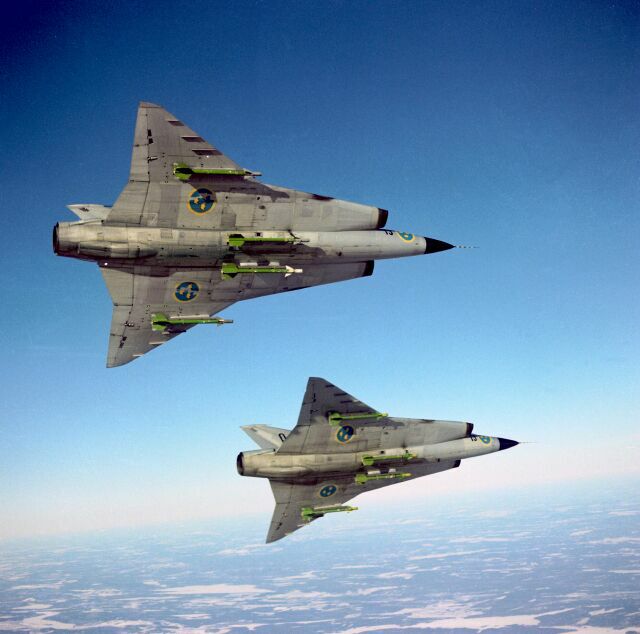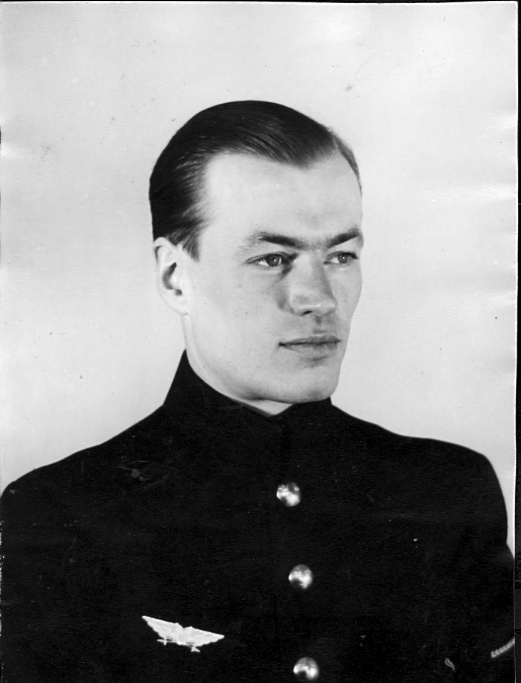Double delta – An untested design to meet an untried target

SAAB had only just amazed the world by developing the ”Flying Barrel”, from an international viewpoint an ultra-modern jet fighter, comparable with the best that the major powers could produce, when the Swedish innovator began work on a next generation jet fighter. The person leading the development team was civil engineer Erik Gustav Bratt.
Erik Bratt – Pilot and engineer
He had gained his pilot’s licence at the age of 21, in 1937, and then trained as a reserve pilot in the Swedish Air Force during the war, in 1940. Pilots in the reserve or those performing national service were also called ”silver wings” as their pilot’s badges were silver, instead of the gold badges worn by pilots with permanent commissions. When the first group were supposed to receive their wings at a ceremony in 1939, the then head of the Air Force told them that he didn’t consider them to be fully fledged pilots, so they would not be awarded the usual gold wings. They would eventually instead receive silver wings through the post.

Erik Bratt as a young reservist pilot in the Swedish Air Force at F6 Wing in 1940. Note the Silver wings on his chest. Photo from Karlsborgs Fortess museum.
Erik Bratt would continue to fly right up to 2003, when at the age of 87 he was Sweden’s oldest pilot.
In 1942 Bratt graduated from the Kungliga Tekniska Högskolan (Royal Institute of Technology in Stockholm). After working as a pilot and also flying for the Swedish Air Force, he started working for SAAB in 1946. By 1949 he had been assigned responsibility within SAAB for its supersonic aircraft development. As Bratt himself has written, initially he first held this post as a temporary measure, until a more experienced candidate could be found. After all, he was only 33 years old. But who else would be qualified? There simply weren’t any supersonic aircraft around, apart from the experimental Bell X1.
SAAB strings its bow
The team at SAAB took into account the facts that despite all the challenges presented by supersonic operation, the aircraft must also fly well subsonically, safely take off and land, and be able to fight efficiently. Compromises would have to be found. Although several other manufacturers were testing delta wings, Bratt decided on a double delta design.
The long, strong inner wings allowed the engine air intakes to be located inside the wings, which according to calculations would be benificial to supersonic operation. However by extending the wing tips and making them thin it was hoped to present good supersonic characteristics at high altitudes. With current technology and computerization it is easy today to forget that all this was completely untested and unknown. All the necessary calculations were performed with pencils, paper and slide rules. There was no computer simulation, only ordinary wind tunnels and mathematics.
The Little Kite
In order to test whether this wing design would be suitable for subsonic flight, which of course was an essential requirement, a sub-scale test aircraft was constructed, known as the SAAB 210 Lill-Draken (Little Kite). This took off for the first time on 21 January 1952 and thereby demonstrated that the concept of a double-delta wing could work in practice.
Radar and engine
The chosen engine was a licence-built variant of the British Rolls-Royce Avon, the same engine that powered the SAAB 32 Lansen (Lance). In Sweden the engine was designated the RM6, and it was eventually produced in three versions, the RM 6A, B and C. Each new version was an improvement over its predecessor.
Devekopment of the Draken’s radar was undertaken by LM Ericsson, but it turned out that this radar, called the PS-03, would not be ready in time for the first production batch of aircraft, so a French radar was purchased as a temporary solution. Although this French radar did not exhibit the same high performance as the forthcoming PS-03, it was installed to avoid production delays.
